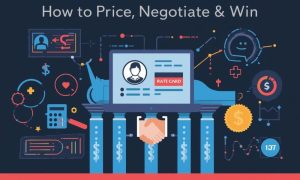
Every year, brands pour enormous energy into Black Friday. But as competition grows and consumer behavior shifts, the old playbook of flashy discounts and urgent countdowns is losing its power. What once guaranteed traffic now barely guarantees attention.
Shoppers today are smarter and more selective. They scroll past generic promotions, compare prices across multiple platforms, and expect a personalized experience from the moment they click. Meanwhile, brands face higher advertising costs, limited visibility, and shrinking margins if they rely on the same tired tactics.
A strong Black Friday marketing strategy means more than cutting prices. It’s about timing, storytelling, and understanding what truly drives your audience to buy. Successful brands are already rethinking their approach, turning Black Friday into a relationship-building opportunity rather than a one-day sales sprint.
In this guide, we’ll look at how modern marketers can plan smarter, spend wiser, and build strategies that not only win on Black Friday but set the tone for long-term growth.
Why the Old Black Friday Playbook Needs a Rewrite
The Black Friday of five years ago doesn’t work anymore. Back then, brands could rely on one explosive weekend to hit sales goals for the quarter. But as consumer habits evolved and competition multiplied, that short-term model started to collapse. Today, success depends on strategy, not shock value.
- One-Day Deal Frenzy Is Over: Black Friday has expanded into a season rather than a single day. Pre-sales start in early November, and shoppers expect deals that last beyond Cyber Monday. For many brands, this longer sales window means rethinking everything from campaign pacing to inventory management. Those who save all their offers for one weekend often lose visibility early and momentum later.
- Rising Competition and Ad Costs: Online advertising is more expensive than ever. Every brand is bidding for the same limited space, especially in retail, electronics, and fashion. The result is inflated costs per click and lower returns for generic campaigns. Throwing money into ads without a clear plan no longer guarantees results. Instead, brands are shifting budgets toward owned channels like email, SMS, and influencer partnerships, where engagement feels more personal and costs are easier to control.
- Price Alone Doesn’t Win Anymore: Discounts still matter, but they’re no longer enough to stand out. Shoppers expect transparency, trust, and a sense of value that goes beyond the percentage off. They’re looking for better experiences, faster checkout, and genuine connection with the brands they support. Companies that focus only on price risk training their customers to buy once and disappear.
Modern marketing success now comes from building relationships, not chasing one-time spikes in revenue. The brands leading in 2025 are the ones that blend creativity with data, deliver consistent value, and think long-term.
Pillars of a Modern Black Friday Marketing Strategy
A successful Black Friday marketing strategy is about much more than timing discounts or writing catchy subject lines. The strongest campaigns are built around four key pillars that combine preparation, personalization, and trust. These elements turn seasonal promotions into sustainable growth.
I Start Early, Build the Story and Spread the Season
Waiting until the final week of November is a mistake most brands can’t afford anymore. Shoppers are already hunting for deals in early November, and competitors that launch pre-sales gain attention first.
Start your campaigns early and use storytelling to build anticipation. Tease upcoming offers, share behind-the-scenes looks, or highlight customer favorites returning for the season. When shoppers are emotionally engaged before the sale starts, they’re more likely to convert once the discounts go live.
Spreading promotions across several weeks also prevents fatigue. Instead of overwhelming your audience with a flood of ads in one weekend, release smaller, focused campaigns that keep interest steady and extend visibility.
II Mobile-First and Omnichannel Activation
Mobile dominates Black Friday shopping, with the majority of transactions now happening on smartphones. This means your website, app, and checkout flow must be fast, responsive, and easy to navigate. A slow-loading page or complicated form can cost thousands in lost sales.
Omnichannel integration is equally important. Customers often discover deals on social media, add items to a wishlist in an app, and finalize the purchase on a laptop or in-store. A smooth, consistent experience across all these channels keeps your brand credible and connected. When digital and physical touchpoints work together, conversions rise naturally.
III Personalisation, Data-Driven Targeting and Creative Agility
Shoppers want offers that feel relevant to them. Data-driven marketing helps brands understand when and where to reach customers with messages that matter. Use audience segmentation and behavioral data to deliver personalized recommendations, not just generic ads.
Creative agility also plays a big role. If certain campaigns outperform others, be ready to adjust in real time. Swap visuals, update offers, and use live insights to keep your strategy sharp throughout the season. The most effective brands treat Black Friday like a dynamic event, analyzing, learning, and optimizing every day.
IV Trust, Transparency and Customer Lifetime Value
Consumers are paying more attention to who they buy from, not just what they buy. Trust has become a central part of every Black Friday strategy. Be transparent about pricing, stock levels, and delivery times. Overpromising and underdelivering can destroy credibility faster than any bad review.
The goal is not a one-time sale but a long-term relationship. Measure success beyond immediate revenue by tracking repeat purchases, loyalty sign-ups, and customer satisfaction. The brands that communicate honestly and deliver consistently are the ones that turn seasonal shoppers into year-round customers.

Channel-by-Channel: What Works and What to Focus On
Every channel plays a different role in your Black Friday marketing strategy. Some drive awareness, others push conversions, and the smartest brands use them together to create a seamless customer journey. Let’s look at the channels that consistently perform and how to get the most from each.
1. Email and SMS: The Conversion Powerhouses
Email remains one of the most effective tools for driving Black Friday revenue. It’s personal, measurable, and ideal for building urgency without sounding pushy. Plan a sequence that builds momentum: teaser, launch, reminder, and final call. Keep subject lines short and focused, and make sure every email has a single clear goal.
SMS, on the other hand, is your real-time trigger. When used responsibly, it drives quick responses during high-traffic hours. Send short updates about flash sales, restocks, or limited-time offers. Timing is everything here, too early and it’s ignored, too late and the deal is gone.
A hint: Combine both channels. Announce upcoming deals via email, then use SMS to remind customers right before the offer expires. This pairing consistently increases conversion rates while keeping your message relevant.
2. Social Media and Influencer Marketing: Turning Attention into Action
Social platforms are where discovery happens. Shoppers browse, compare, and make buying decisions in their feeds, often influenced by creators they trust. That’s why influencer partnerships have become a vital part of any Black Friday marketing strategy.
Instead of running generic product posts, collaborate with creators who genuinely use your products. Authentic content performs far better than polished ads. Encourage them to share early access codes, personal reviews, or behind-the-scenes previews.
You can simplify this process using an influencer discovery tool to find the right match for your brand. Once you identify creators who align with your audience, platforms like Hypefy’s influencer hiring platform help you manage collaborations and track performance in one place.
A hint: Create shareable moments. Offer limited-edition products or early-access deals that influencers can reveal to their followers first. These exclusive experiences boost engagement and create genuine excitement.
3. Paid Search and Ad Campaigns: Spending Smarter, Not Harder
Competition for ad space skyrockets in November, and that means budgets vanish fast. To stay efficient, focus your spend on high-intent keywords and retargeting. Avoid fighting over generic search terms like “Black Friday deals”; instead, combine your brand name or category for better ROI (for example, “Black Friday skincare deals” or “Black Friday software discounts”).
Schedule ads strategically. Many shoppers research early but purchase later, so a staggered campaign with early awareness ads followed by strong retargeting in the final week performs best. Monitor performance daily and shift spend toward the best-performing creatives and audiences.
A hint: Use your owned audience lists for remarketing. Customers who engaged with your brand earlier in the year are far more likely to convert at a lower cost than cold traffic.
4. In-Store and Hybrid Experiences: Bridging Online and Offline
Even in a digital-first world, physical stores still play an important role. Shoppers love the instant gratification of buying in person, especially if they have already discovered your products online.
Integrate your digital and retail presence. Offer “buy online, pick up in-store” options, mobile check-ins, or QR-based loyalty points. Use consistent visuals and messaging across both channels so customers recognize your brand wherever they shop.
Some brands even host in-store preview events before the main sale. This small gesture turns shopping into an experience and builds community loyalty that pure e-commerce can’t match.
When each of these channels works together, with consistent branding, timing, and data-backed insights, you move from scattered promotions to a unified Black Friday ecosystem. The result isn’t just higher conversions but stronger customer relationships that last long after the sale ends.

Execution Checklist: From Plan to Launch
Even the best Black Friday marketing strategy fails without proper execution. Once you have your plan, it’s time to turn it into a timeline, assign responsibilities, and make sure every detail runs smoothly. Here’s a practical checklist to guide you through each phase, from preparation to performance tracking.
1. Audit Last Year’s Performance
Start by reviewing what worked and what didn’t. Look at last year’s campaign results, product performance, and customer feedback. Which items sold out first? Which channels delivered the best return on investment? Were there technical issues or abandoned carts you can fix this year?
Analyzing historical data gives you a realistic foundation for improvement. Without it, you risk repeating the same mistakes or overlooking small wins that could scale with better timing or creative execution.
2. Build Your Campaign Calendar
Black Friday is no longer a weekend event, it’s a multi-phase marketing cycle. Create a calendar that maps out your pre-launch, main event, and post-event activities.
- Pre-launch: Start building awareness two to three weeks before Black Friday. Tease offers, grow your email list, and collect wish lists from customers.
- Main event: Run limited-time offers, bundle deals, and exclusive promotions during the core sales window.
- Post-event: Use follow-up campaigns to re-engage customers, promote related products, or offer loyalty rewards.
A well-structured calendar helps you stay organized and avoid the last-minute chaos that often leads to missed opportunities.
3. Create Creatives and Offers Aligned with Audience Segments
Generic campaigns are easy to ignore. Use customer data to tailor visuals, tone, and offers to different audience groups. Returning customers might appreciate early access, while new visitors respond better to welcome discounts or curated bundles.
Keep your creatives consistent but flexible enough to adapt in real time. If a product starts trending, be ready to highlight it across channels instantly. Small adjustments during the campaign can lead to major improvements in results.
4. Ensure Site and App Infrastructure Are Ready
Technical readiness is often underestimated until it fails. Before launching your campaigns, run a full performance test of your website and mobile app. Check page load speed, image compression, payment gateway stability, and checkout flow.
A few seconds of delay can turn enthusiasm into frustration. Make sure your servers can handle peak traffic, forms work on mobile, and there are no unnecessary steps in the buying process. The smoother the experience, the higher your conversion rate.
5. Set KPIs Beyond Sales
Sales are important, but they’re not the only indicator of success. Broaden your KPIs to include:
- Customer acquisition cost (CAC): How efficiently are you bringing in new customers?
- Repeat purchase rate: Are first-time buyers returning after the sale?
- Average lifetime value (ALV): How much revenue does each customer generate over time?
Tracking these metrics helps you understand whether your campaign builds long-term value or just short-term revenue. The best Black Friday strategies create both.
Treat this checklist as your operational roadmap. It keeps your team aligned, your campaigns consistent, and your customers satisfied, the three ingredients every brand needs for a profitable Black Friday season.

Post-Black Friday: Turning Traffic into Loyalty
When the rush ends and the dashboards quiet down, that’s when the real work begins. Black Friday might bring record-breaking traffic, but what you do with that attention determines whether you just ran a campaign or built a customer base.
The post-Black Friday period is where short-term sales turn into long-term relationships. It’s your moment to keep the momentum alive, turn first-time buyers into repeat customers, and prove that your brand delivers more than just discounts.
Follow-Up Campaigns That Add Value
After checkout, your customer’s journey shouldn’t stop. Send thank-you emails that feel genuine, not automated. Include helpful content like product care tips, related recommendations, or exclusive sneak peeks at future releases.
You can also use retargeting campaigns to re-engage shoppers who browsed but didn’t buy. Instead of pushing the same product, highlight complementary items or value-based offers like loyalty points or free shipping on their next order.
For brands running influencer campaigns, this is the perfect stage to reconnect. Encourage creators to share post-purchase experiences or reviews. If managed through an influencer marketing agency, this follow-up content can keep awareness high without additional ad spend.
Reward Loyalty, Not Just Clicks
Every new customer is a chance to build retention. Loyalty programs, referral incentives, and early access to future sales give people a reason to stay connected. Segment your audience to identify those who purchased multiple times or left positive reviews, and reward them accordingly.
Even small gestures, like an appreciation email or an anniversary discount, can make your brand feel personal and human, something few retailers manage to achieve after the noise of Black Friday fades.
Learn, Refine, and Prepare for the Next Season
The insights you collect after Black Friday are your roadmap for next year. Analyze what worked: Which products sold fastest? Which channels delivered the best ROI? What messages resonated most with your audience?
Document these lessons now, while the data is fresh. Use them to refine your next campaign, test new creative angles, and identify emerging shopping patterns. Brands that learn continuously are the ones that stay ahead, not just during the holidays but all year round.
Black Friday doesn’t end when the sale ends. It evolves into customer stories, lasting impressions, and lessons that shape your next win. The brands that see it this way don’t just capture attention, they build loyalty that keeps paying off long after November is over.

Execute with Confidence This Black Friday
A winning Black Friday marketing strategy isn’t about shouting louder or discounting deeper. It’s about understanding how your audience thinks, what motivates them to buy, and how to build a connection that lasts longer than a single sale.
Brands that succeed this year will plan early, personalize their approach, and deliver experiences that feel effortless across every channel. They’ll focus on trust, timing, and creativity instead of relying on short-lived gimmicks.
At its core, Black Friday is no longer a race for attention, it’s a test of who understands their customers best. The businesses that invest in meaningful storytelling, seamless mobile experiences, and transparent communication will not only win this season but strengthen their foundation for the year ahead.
If you’d like to go beyond strategy and see how shopper habits are evolving this season, read our latest article:
👉 Black Friday Shopping Trends | What Brands and Shoppers Should Know
It breaks down how consumer behavior, technology, and expectations are reshaping the shopping landscape, insights that every marketer should understand before launching their next campaign.



